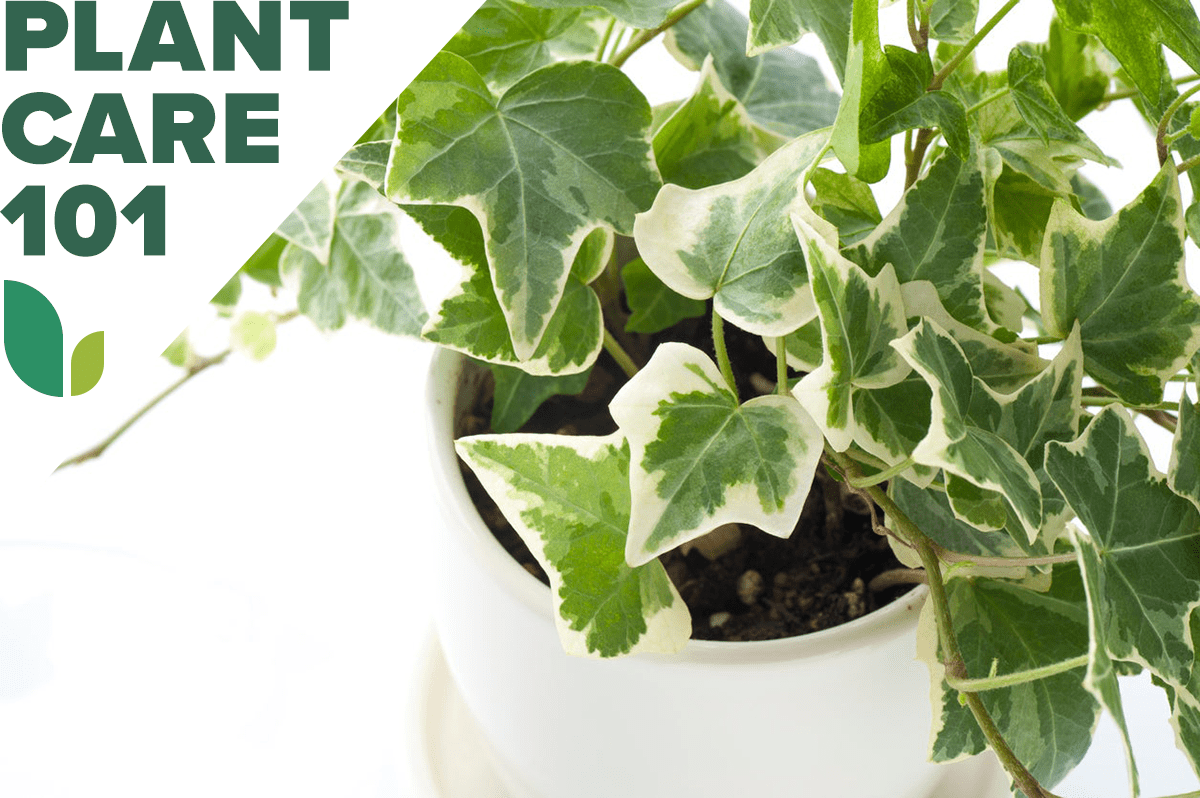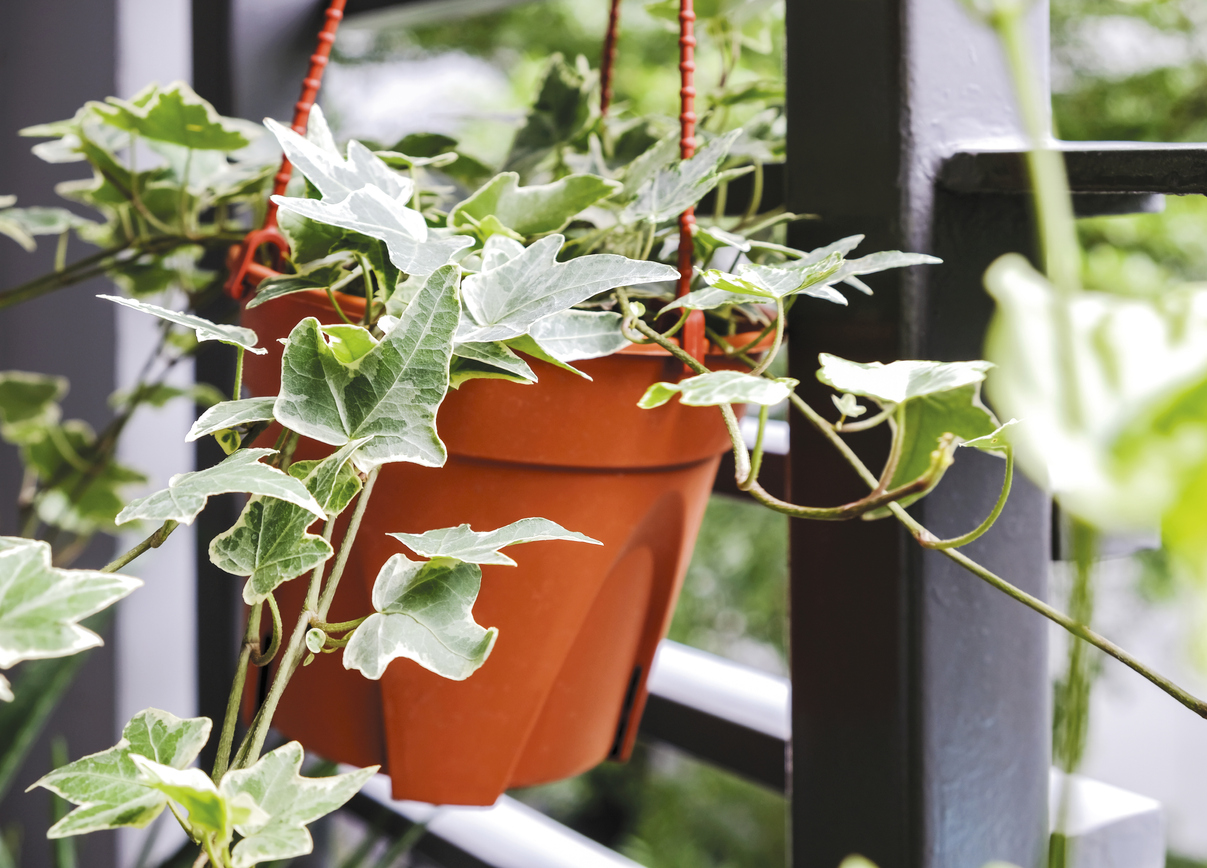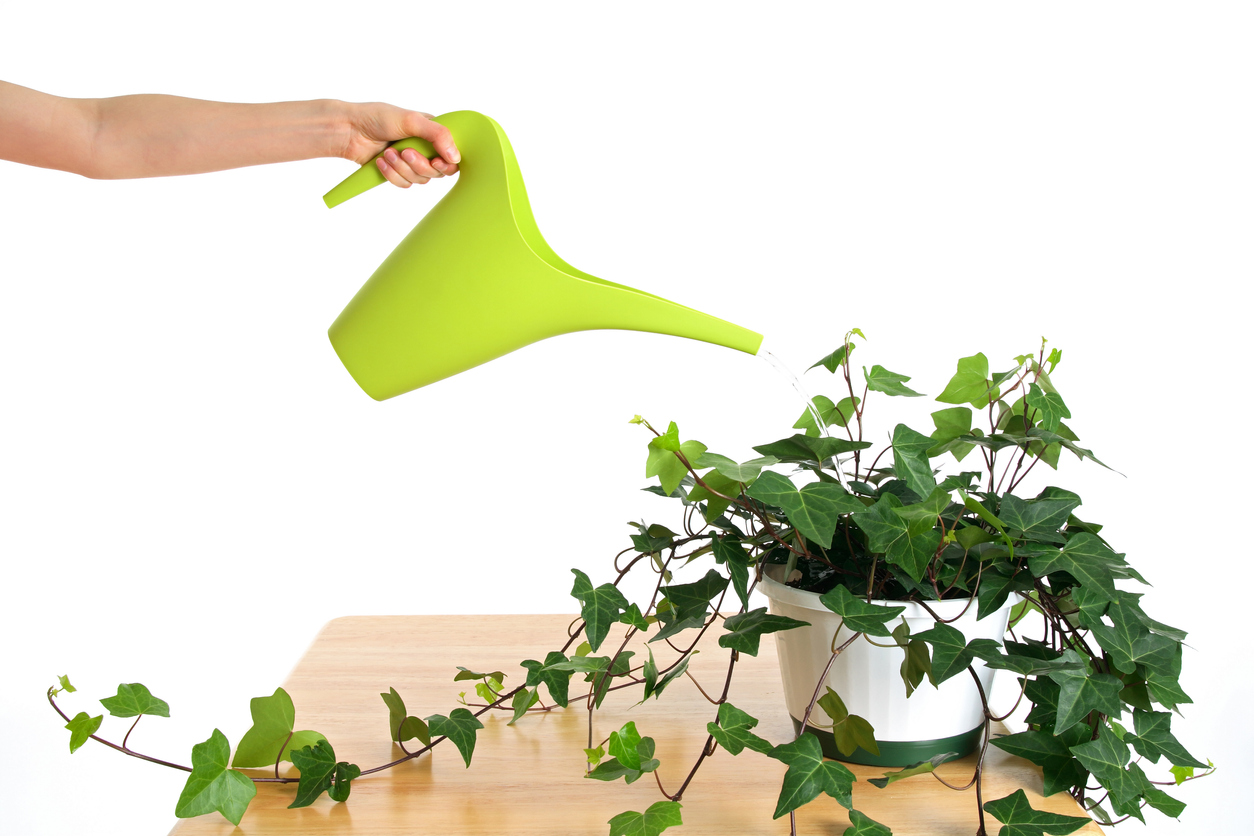

We may earn revenue from the products available on this page and participate in affiliate programs. Learn More ›
From Greek myths to English ballads, the ivy plant has long held a prominent place in popular culture. Like the beautiful golden pothos plant, English ivy has grown even more popular in recent years, with new varieties appearing on the market nearly every year. While there are a few tricks to learning ivy plant care, growing English ivy indoors is relatively easy thanks to its tolerance of medium-to-bright light and lower room temperatures. If you want to know how to take care of an ivy plant, you’ll find all of the information you need to get started below.
RELATED: 10 Climbing Plants That Are Easy to Keep Under Control
Ivy Plant Care at a Glance
Common Name: Ivy, English ivy
Scientific Name: Hedera helix
Soil: Well draining, pH 5.5 to 6.5
Light: Medium- to-bright, indirect light
Water: Regular to moderate
Food: Feed monthly except in winter
Temperature and Humidity: 50 to 70 degrees Fahrenheit, high humidity
Propagation: Stem cuttings
Safety: Mild toxicity if ingested; sap can cause allergic reactions
English Ivy Characteristics

English ivy’s scientific name, Hedera helix, is fitting for a plant with twisting, delicate tendrils that spill out of flower pots and hanging baskets. The beautiful green and variegated leaves on ivy vines have 3 to 5 lobes, which can mature to heart-shaped foliage.
Like its common name suggests, English ivy is native to the British Isles, as well as West Asia, North Africa, and most of Europe. It’s an invasive plant in North America, as it spreads fast in outdoor gardens and can even collapse fences and take down masonry on buildings. Although outdoor ivy is an aggressive grower and considered a bad plant for gardens, it makes for a harmless addition to any houseplant collection. In fact, some ivy varieties are specifically grown to be indoor plants, though an ivy plant brought from outside may not grow successfully indoors.
Beyond being easy to grow and looking good on a bookshelf, English ivy comes with other benefits, too. According to NASA, ivy can help purify the air inside of homes. More recently, tests potentially found that English ivy houseplants can remove mold spores from indoor air.
Types of Ivy Plants
- Aloma: Its leaves are pale green when new and mature to emerald edged with a silvery white.
- Asterisk: This variety has distinctive glossy green leaves that grow in a star or asterisk shape.
- Bettina: A compact variegated variety, its green leaves feature cream and white borders.
- Chicago: This classic, glossy-green ivy grows fast and maintains a medium-size leaf.
- Curly Locks: A vigorous grower with glossy green leaves that twist and curl, this variety is a unique hanging plant.
- Gold Baby: Another smallish variegated variety, its green leaves are edged with a bright golden yellow.
- Glacier: Its leaves grow in a variety of colors, from pale green to almost blue, and all have a creamy white border. ‘Glacier’ can handle slightly lower light conditions than other indoor varieties.
- Shamrock: This glossy, bright-green variety looks the most similar to outdoor ivy, but in miniature form.
Selecting Soil for Ivy Plants
Indoor ivy should be planted in quick-draining potting soil specifically made for houseplants. Ivies like their soil a little on the acidic side, with an ideal soil pH being between 5.5 and 6.5, but something like Miracle-Gro Indoor Potting Mix will do fine. Make sure the pot has multiple drainage holes to ensure the ivy doesn’t sit in water. Repotting is usually necessary within 3 years or once the roots start to appear crowded through the drainage holes.
The Right Light
In the great outdoors, English ivy prefers shade to partial shade. This leads to the common misconception that they are low-light houseplants. Yet a key thing to know about how to care for an ivy plant indoors is that it needs medium or bright, indirect light. Variegated varieties benefit from medium light, whereas solid-green ivy generally prefers brighter light. All varieties of ivy should be placed away from direct sunlight but in a spot that remains bright throughout most of the day.
Poor lighting will cause ivy plants to grow leggy. Their leaf color will dull, and variegated ivy varieties lose the pronounced variegation on their leaves. Remember, too, that although outdoor ivy plants can tolerate some direct sun, those growing inside can suffer burned leaves brown spots if left in direct sunlight, resulting in brown spots.
RELATED: The 25 Best Plants for Hanging Baskets
Watering Ivy Plants

Indoors, ivy prefers to be on the drier side. Allow the soil to dry out completely between waterings. Be sure the pot has adequate drainage, since ivy doesn’t like standing water. Empty out the pot saucer after watering as necessary. It’s better to err on the side of too dry rather than too wet with indoor ivy plants.
Fertilizing Ivy Plants
All indoor ivy plant types will benefit from regular indoor plant food during the warmer months. Feed them once a month from spring through fall with a high-nitrogen, water-soluble plant food. Be sure to water the ivy before fertilizing; never apply fertilizer to a dry plant. If they prefer, ivy lovers can apply a slow-release indoor plant food once in spring and once in summer.
Allow ivy a period of dormancy in the winter and don’t fertilize during these months. Overfertilization can lead to plant stress and attract pests and disease.
Setting the Temperature and Humidity
Unlike other houseplants that come from tropical environments, ivy plants are native to cooler climates and therefore prefer slightly cooler indoor temperatures. Ideally, they’ll be in a room that stays between 50 and 70 degrees Fahrenheit.
While they prefer it cool and like drier soil, ivy plants love humidity. To keep ivy healthy indoors, mist the ivy plant a few times a week with a mister or spray bottle. In the winter, mist every day, since the insides of homes tend to be drier in the winter. Be sure the spray bottle is designated for houseplants and isn’t used to hold anything other than water.
Ivy also can benefit from humidity trays like this highly rated option available at Amazon. Try placing pebbles in the plant tray and set the ivy pot on top. Add a little water to the tray (remember, ivy doesn’t like sitting in standing water, so the pebbles are essential). As the water around the pebbles evaporates, it will release humidity into the air. A humidifier in the same room also works.
Like many other houseplants, indoor ivy plants benefit from a good washing every couple of months. Place the ivy in the sink and rinse off the leaves or put the plant in the shower and (using cool water) soak the plant. This helps to remove dust and allows for an inspection to see if any pests have taken up residence in the plant.
Unlike many of its hothouse companions, ivy can tolerate lower room temperatures of between 50 and 70 degrees Fahrenheit.
Propagating Ivy Plants

With patience, ivy can be propagated from seed, however, the most common way to propagate ivy plants is by cuttings. A cutting should be several inches long if possible. To root in water, place cuttings in a jar or vase. When enough roots have formed, transplant the cutting to a small pot (with a potting medium labeled as good for starts). The cuttings can also be dipped in rooting hormone and then rooted in perlite or sand. Put just the bottom inch of the cuttings in the medium.
Keep the rooting medium moist, which can be tricky since it dries quickly. Use a tray for seed starting that has a lid or a small indoor greenhouse to hold moisture in. Cuttings typically root in 6 to 8 weeks.
Safety Considerations
Ivy plants have a sap that contains a substance called falcarinol. The sap of the plant can cause an allergic reaction in some people. For this reason it’s a good idea to wear gardening gloves when trimming or transplanting ivy plants. Ivy can also be toxic to pets if consumed, resulting in vomiting, diarrhea, drooling, difficulty breathing, and swelling of the mouth or tongue.
Potential Pests and Diseases
With any indoor plant, if pests are spotted, isolate the plant immediately. Indoors, pests spread from plant to plant much faster than outside. Repeat treatment as needed and don’t return the plant to its rightful place until the insects are gone.
One of the most common pests on indoor ivy plants is the spider mite. These insects are so small they look more like little black or brown specks. The easiest way to identify spider mites is by the webs they make on the undersides of leaves. Ivy are also vulnerable to aphids. Treat for aphids and spider mites by washing the plant with water and spraying with a neem oil or an insecticidal soap safe for indoor use.
Scale can occur occasionally, but is less common on indoor ivy plants than other houseplants. Treat for scale using the same method for aphids and spider mites.
Mealybugs can appear on the undersides of leaves and along the stems, and are identifiable by their cotton-like appearance. If there are only a few bugs, treat by dipping a cotton swab in rubbing alcohol and dabbing individual bugs, being careful not to get the alcohol on the leaves of the plant. If the infestation is heavy, treat with insecticidal soap.
Brown spots on the leaves can appear due to overwatering, but sometimes it is a condition called “leaf spot,” which is actually a bacteria. This is transferred to indoor plants from cutting tools or gardening gloves used outside. To prevent it, keep a separate set of tools and gloves for indoor and outdoor plants. Ivy plants are susceptible to root rot, which can be avoided by letting the soil dry out all the way down to the roots between watering.
RELATED: 15 Beautiful and Functional Trellis Ideas for Climbing Plants
FAQs About Ivy Care

With the right balance of light, water, and humidity, ivies can be rewarding plants. Want to learn even more about how to care for ivy? Read the answers to these common questions.
Q. Do ivy plants need direct sunlight?
No. Although outdoor ivy plants can tolerate a variety of conditions, including some sun, they prefer partial to full shade. Indoors, direct sunlight can cause ivy leaves to burn.
Q. How often does an ivy plant need to be watered?
Ivy plants like to be watered when the soil in the pot has dried out completely or nearly completely. The frequency of this is determined by the size of a pot. A smaller potted ivy plant will likely require watering once a week, and larger plants may be able to go longer between watering.
Q. Is ivy a good indoor plant?
Yes, armed with some knowledge on how to grow ivy indoors, such as maintaining the right temperature, water, and humidity, ivy makes a beautiful, long-lasting indoor plant.
Q. Do ivy plants clean the air?
Yes, even NASA agrees that English ivy is a houseplant that improves air quality indoors.
Q. How can I make my ivy grow faster?
Start by choosing a cultivar of ivy that is a vigorous grower, such as Chicago or Curly Locks. Make sure to meet the light requirements for the variety (usually bright to medium indirect light) and maintain a feeding schedule of once a month from spring to fall.
Q. How do you water indoor ivy?
Water indoor ivy when the soil has dried out completely or nearly completely. Add just enough water until the water runs out of the drainage holes on the bottom of the pot. Let it drain for a few minutes and then water once more in the same manner, making sure the pot drains completely.
Looking for more easy-to-grow low-light houseplants? Check out our guides on caring for philodendron, peace lily, and peperomia.
